The photo that couldn't have been taken (cont.)
- The shadow reflected in the curved visor is too straight.
Looking again at the comparison of the 3d render to the photographs, the curvature of the shadows in the reflection look similar between the two. 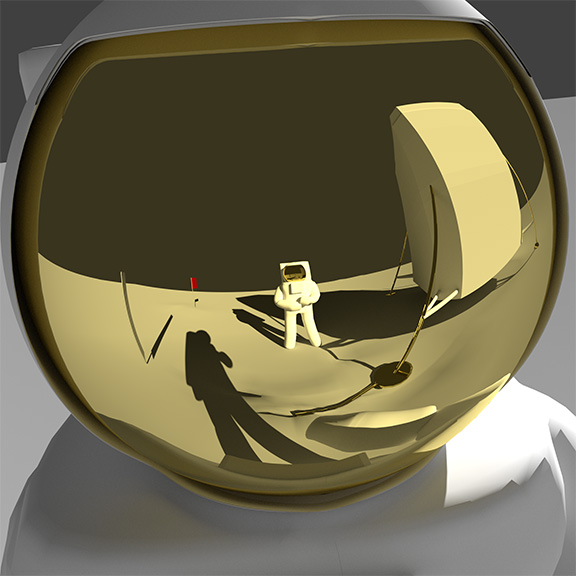
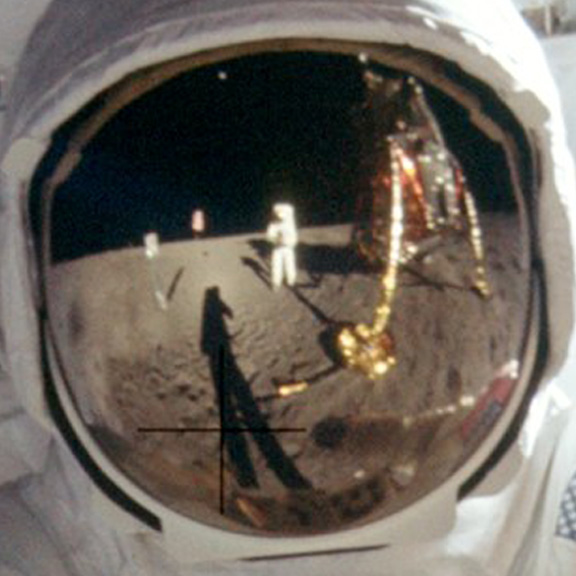 This similarity suggests that this little amount of curvature is not unusual for the location in which the shadow is reflected on the visor.
This similarity suggests that this little amount of curvature is not unusual for the location in which the shadow is reflected on the visor. But let's investigate what determines how much distortion an object appears to get in a reflection on a sphere.
We can again make a simple scene in Blender of a shiny and reflective spherical object. By placing colored rods in different areas of the scene in relation to the sphere
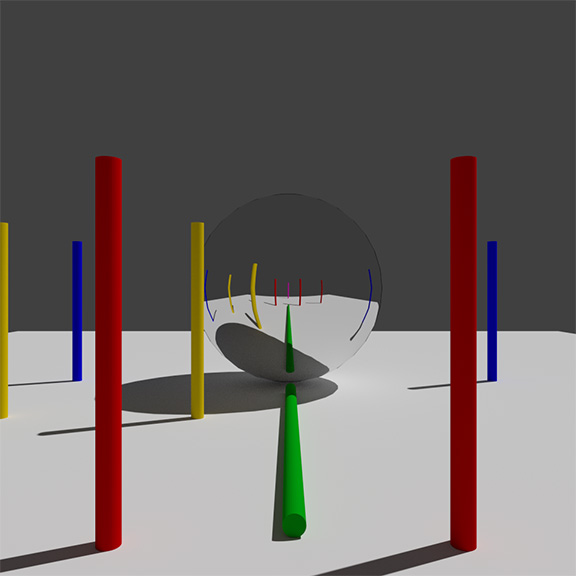 The green rod lying horizontal straight from below the sphere shows almost no curvature. Same as the the pink rod standing vertically all the way to the back of the scene.
The red rods are on the same plane but exhibit very little curvature.
The green rod lying horizontal straight from below the sphere shows almost no curvature. Same as the the pink rod standing vertically all the way to the back of the scene.
The red rods are on the same plane but exhibit very little curvature. As we start to position rods at larger angles from sphere and the viewer the curvature of the reflection starts to increase.
The blue rods show the most amount of curvature.
Looking straight down on the same scene from above, we can see that the blue rods are positioned at an almost 90 angle from the sphere and the viewer.
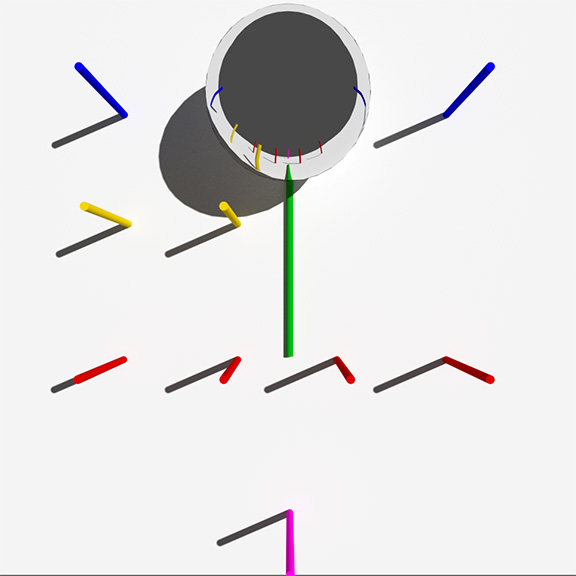 The further an object gets around the side of the sphere in relation to the viewer the more curvature it appears to have.
The further an object gets around the side of the sphere in relation to the viewer the more curvature it appears to have.If we look again at the original photograph we can see that his shadow falls in front and at a slight angle to the sphere that makes his helmet.
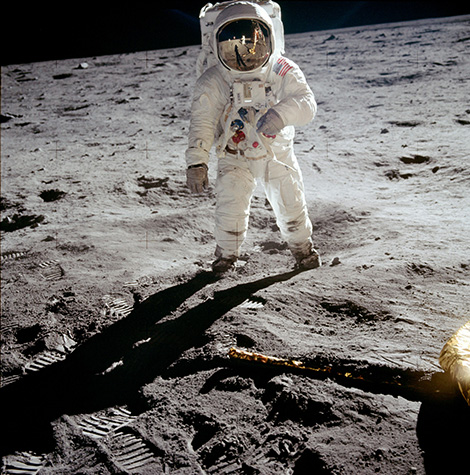 The lander's leg and indeed a good portion of one side of the lander shows a large amount of distortion and must lie almost directly to his left.
The lander's leg and indeed a good portion of one side of the lander shows a large amount of distortion and must lie almost directly to his left.  Other objects such as the Solar Wind Collector, the flag, the other astronaut and the other half of the langer are closer to being directly in front of the astronaut in the photograph.
Other objects such as the Solar Wind Collector, the flag, the other astronaut and the other half of the langer are closer to being directly in front of the astronaut in the photograph.
next page